8 Yoga Poses for Narrow Hips
This article originally appeared on Yoga Journal
Hips don't lie-especially when you're practicing wide-legged poses. But these tips help you adapt asanas to accommodate your anatomy
By now we've pretty much agreed on this fact: Yoga is for every body. But all bodies are not the same. Your body is built around your unique anatomical scaffolding. And that can have an impact on your practice.
One example is the differences in the shape of the pelvis. Thomas Myers, a veteran yoga teacher and author of Anatomy Trains: Myofascial Meridians for Manual Therapists and Movement Professionals, explains that, if you were born in a female body, your hips are generally slightly farther apart to accommodate the possibility of giving birth.
"Of course there are slim-hipped women and wider men," he says, warning against gender stereotypes. In any case, people with narrower hips may find wide-legged poses more challenging. "Anything that requires the legs to spread a lot is going to be more problematic."
That doesn't mean people with narrow hips can't do or shouldn't try such poses as Goddess Pose and Upavistha Konasana (Wide-Angled Seated Forward Bend). "[We] may have to work a little harder," he says. "We all need it. We just don’t get there as fast."
Working With Narrow Hips
When we talk about wide or narrow hips, we're not talking about your outermost curves. True hip width is determined by the distance between your hip points. (Anatomically known as the anterior superior iliac spine, these are the edges of the pelvic bone that seem to protrude forward just above the thighs.) The distance will differ from person to person.
People also have various anatomical differences in the pelvis that may influence how easily they can practice a wide-legged pose. Practicing yoga shouldn't require you to defy your anatomy, however. Instead, practice working within the body's parameters. Myers suggests that yoga teachers who have narrow-hipped people in class "cut them some slack because they’re not going to be able to open their knees as wide." Focus more on how the pose feels in your body than what the shape looks like.
That means Prasarita Padottanasana (Wide-Legged Standing Forward Bend), for example, may not be as wide or as low as you're often taught. You may look a little "taller" because the narrower angle of your legs means your upper body will be farther from the floor. Narrow-hipped folks may feel more supported with blocks turned on a high setting beneath their hands.
If wide-legged poses are a challenge for you, practice with intentionality and take a gentle, incremental approach. As in all asana practice, avoid overstretching to the point of straining the muscles and ligaments. Honor your natural anatomical differences and stretch without pain.
Practicing Wide-Legged Yoga Poses
Some wide-legged yoga poses may look different in people with narrow hips, but they can be just as accessible. Visit the Yoga Journal Pose Library for detailed instructions on each pose.
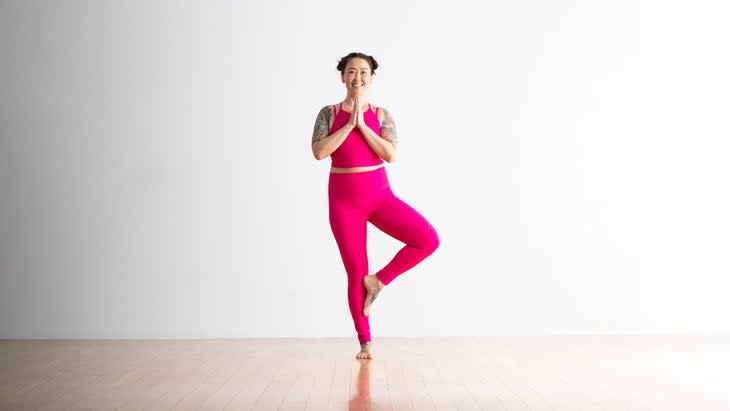
Vrksasana (Tree Pose)
We may not think of Tree as a wide-legged pose since only one leg is turned outward but the foot-on-thigh version of the pose requires you to turn your leg out and lift it at the hip. If this is challenging, come into Tree by turning your right leg out and bringing your right foot to rest on your shin or a block. Allow your bent knee to point more toward the top right corner of your mat rather than the side.
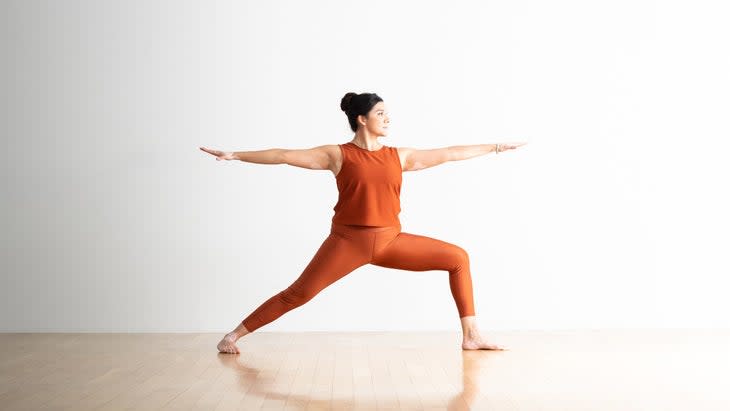
Virabhadrasana 2 (Warrior 2 Pose)
For Warrior 2, step your feet as wide as is comfortable without straining. Bend your front knee, but instead of forcing your front thigh toward parallel, allow it to maintain a gentle slope toward your knee. If you notice your front knee drifting inward toward the center of the mat, open in the opposite direction.
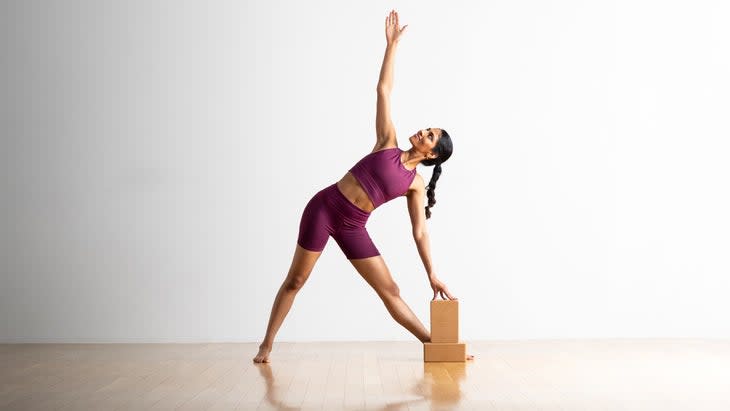
Utthita Trikonasana (Extended Triangle Pose)
In Yoga Myths: What You Need to Learn and Unlearn for a Safe and Healthy Yoga Practice, Judith Hanson Lasater says trying to bend to the side as if you're moving between two panes of glass doesn't take into account actual hip and pelvis anatomy. Instead, step the feet as wide as is comfortable without straining and turn your front foot, knee, and thigh out to the side. Then allow your pelvis and torso to turn slightly forward as you bend to the side. Use blocks to bring the floor to meet your hand.
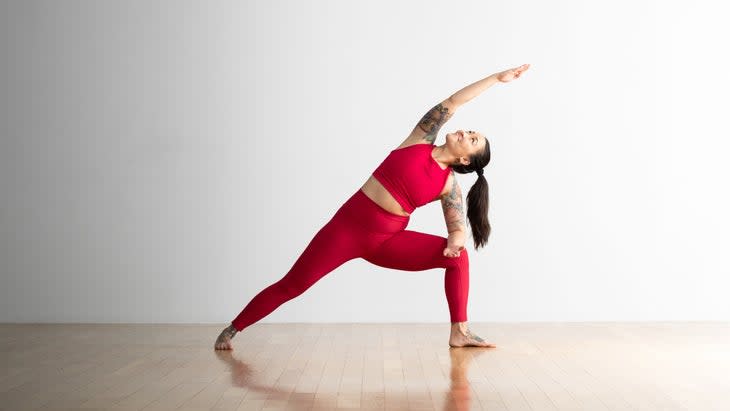
Utthita Parsvakonasana (Extended Side Angle Pose)
Placing your hand on the floor or even on a block in Side Angle may not be possible if your hips are tight or narrow. Instead, practice with your forearm on your thigh.
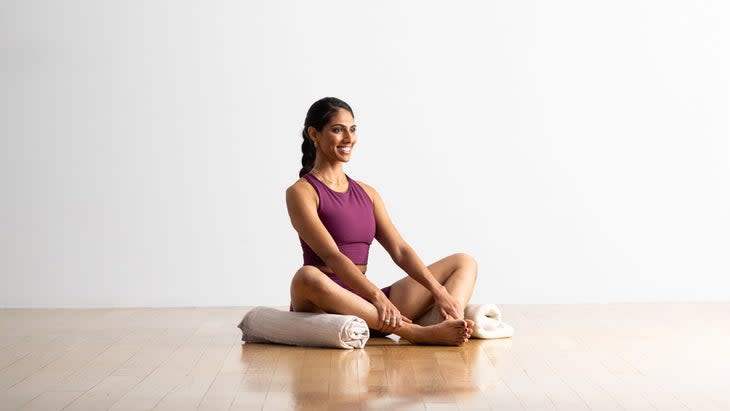
Baddha Konasana (Bound Angle Pose)
From a seated position, bring the soles of your feet together and allow your knees to open and drop away from one another into Bound Angle. You may need to support your knees with blocks or bolsters, and move your feet further from your body to find a comfortable position for your hips. These tips can also help with Supta Baddha Konasana, the reclined version of this pose. Note whether practicing the pose lying down feels different in your hips.
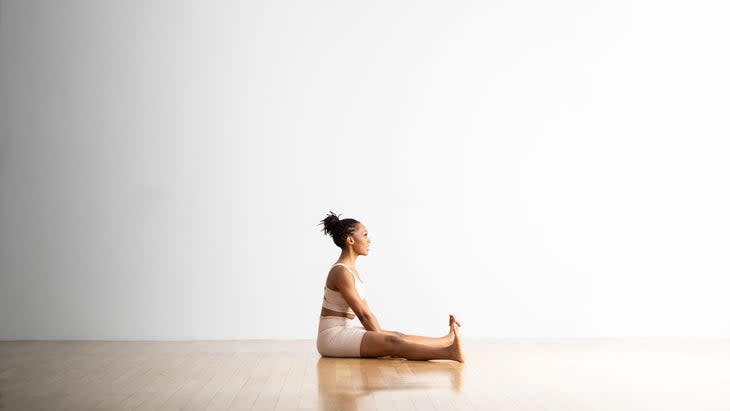
Upavistha Konasana (Wide-Angle Seated Forward Bend)
Sit with your legs extended straight out in front of you. Open your legs out only as wide as you comfortably can. Lean forward into the pose as far as your hips will allow without forcing. Place your hands in front of you for support.
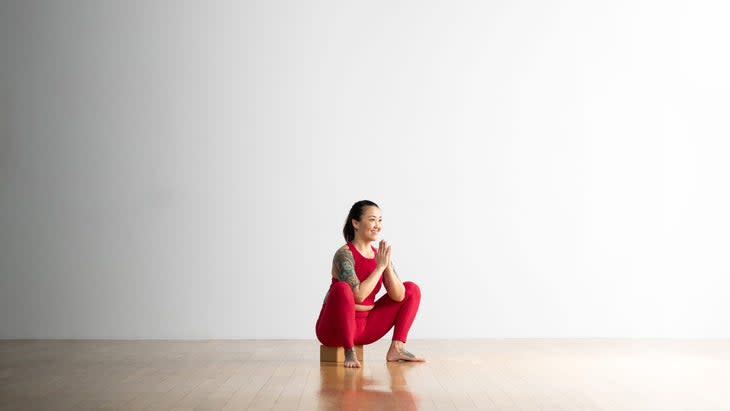
Malasana (Squat or Garland Pose)
You can keep your knees closer together as you squat in Malasana. In her book Blockasanas, yoga instructor Jenny Clise suggests sitting on blocks to support yourself as you work to bring your torso to a more upright position. Turn your feet out and allow your knees to track in the direction of your feet. You can bring your hands together at your heart.
Skandasana (Side Lunge or Pose Dedicated to the God of War)
There are several ways you can adjust this side lunge. If your hips are very tight, begin in a wide-legged stance with your hands on your hips and shift your weight back and forth from one leg to the other, bending at the knee. If you have more mobility in your hips, you can stand with your legs a comfortable distance apart, fold halfway forward, and shift from left to right, bending at the knees as deeply as you can. Clise also offers a seated Malasana: Sit on blocks in a squatted position, extend one leg straight out to the side and point your toes and knees toward the ceiling.
For exclusive access to all of our fitness, gear, adventure, and travel stories, plus discounts on trips, events, and gear, sign up for Outside+ today.

